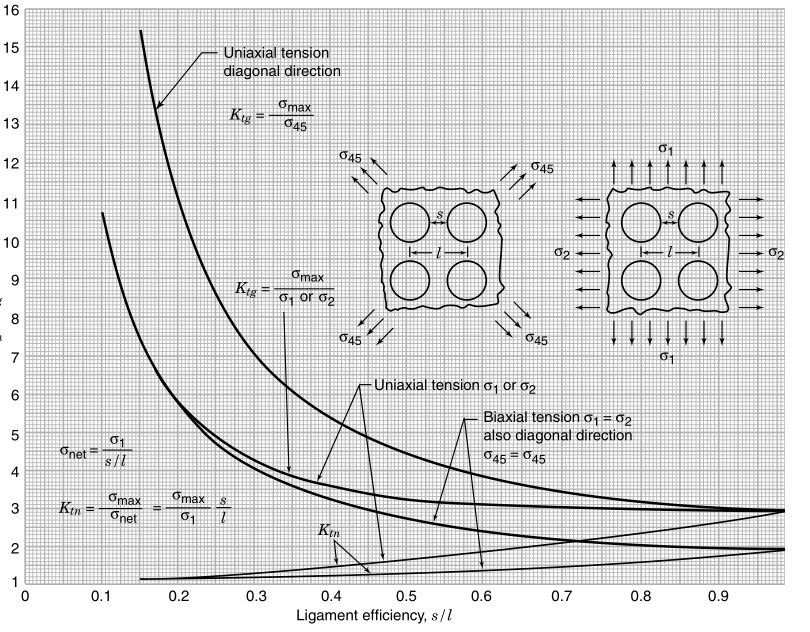From an old, wise engineering book Peterson's Stress Concentration Factors (http://eu.wiley.com/WileyCDA/WileyTitle/productCd-0470048247.html page 324) I've got the following problem:

There is 2D infinite periodic structure with round holes of radius r with tension applied to it. The relation of maximum stress in the body to the applied one should follow nice 1/x like curve, see the picture. While I'm trying to reproduce this example by numerical simulations, I'm getting that max stress is almost independent of hole size.
I use displacement based weak formulation for elasticity with periodic boundary conditions remaping top to bottom and left to right, with exception of corners (0,0), (0,1), (1,0), (1,1). For problem to be well-posed I've fixed displacement vector in one point (0,0) to be equal (0,0). Am I right? Is fixing one point enough? I still can rotate the unit square though. Do I need to fix an additional point?
The tension is applied via Neumann boundary conditions with tension applied in the following way. First, I define vector $g = (1.0, 0)$ and then I create right hand side for the weak form of equation: $$ \int C\varepsilon(u):\varepsilon(v)dx = \int_{left border} (-g,v)ds + \int_{right border} (g,v)ds, $$ where the differential operator $\varepsilon$ is the symmetric part of the gradient and $v$ is a test function obeying periodic boundary conditions. This is the place I'm most doubted about applying tension correctly. Is it correct? Is my problem well-posed?
p.s. I'm solving it with Fenics and code can be found here https://fenicsproject.org/qa/13464/verifying-elasticity-benchmark-structure-boundary-conditions